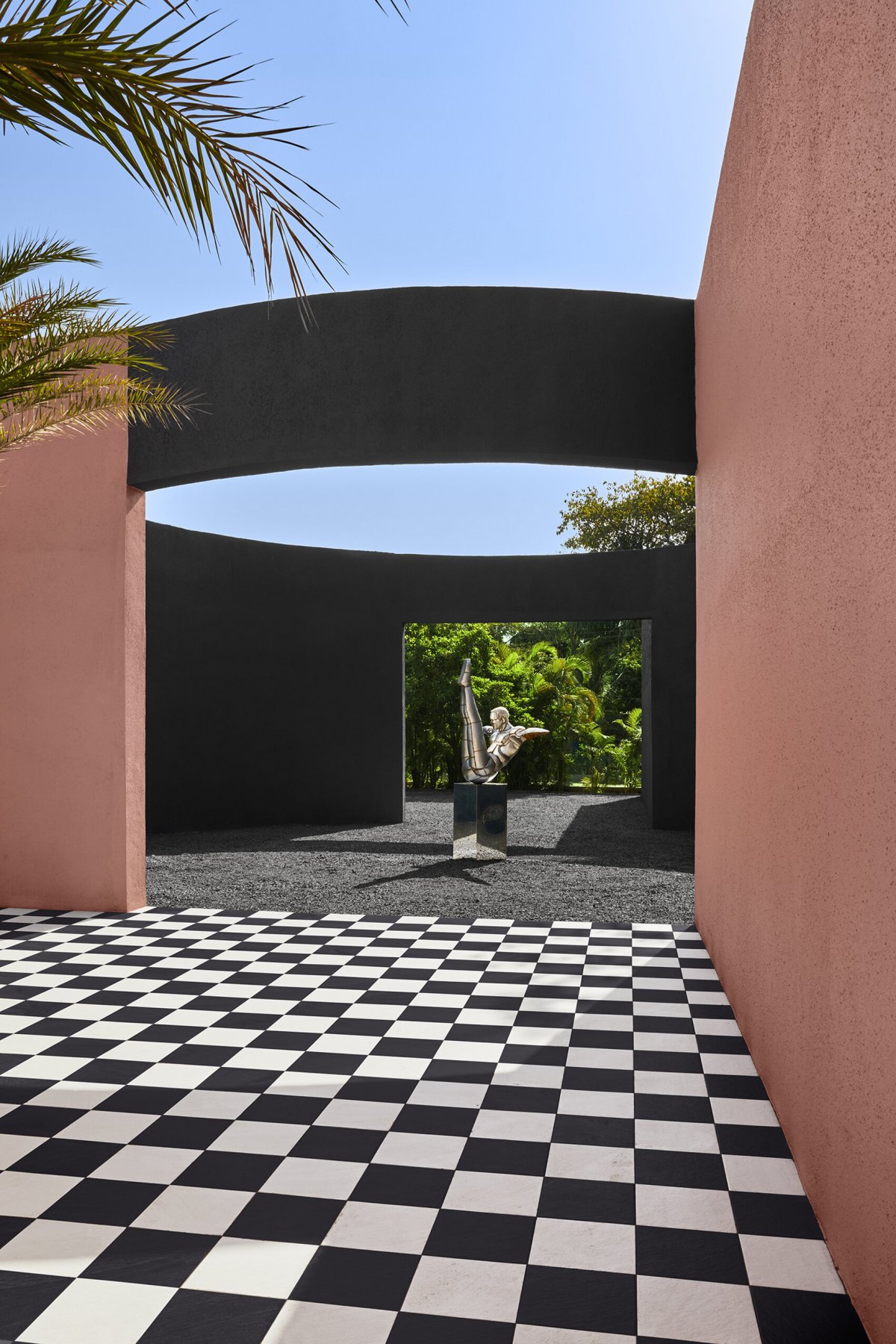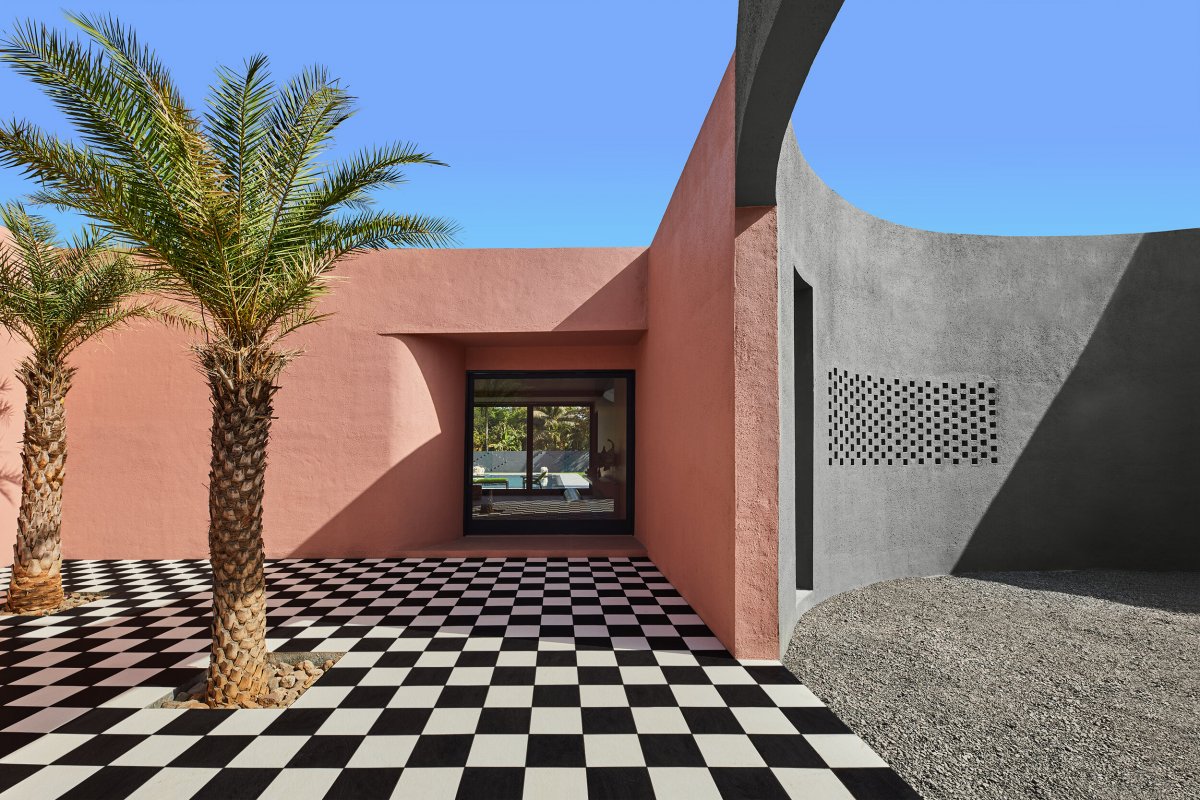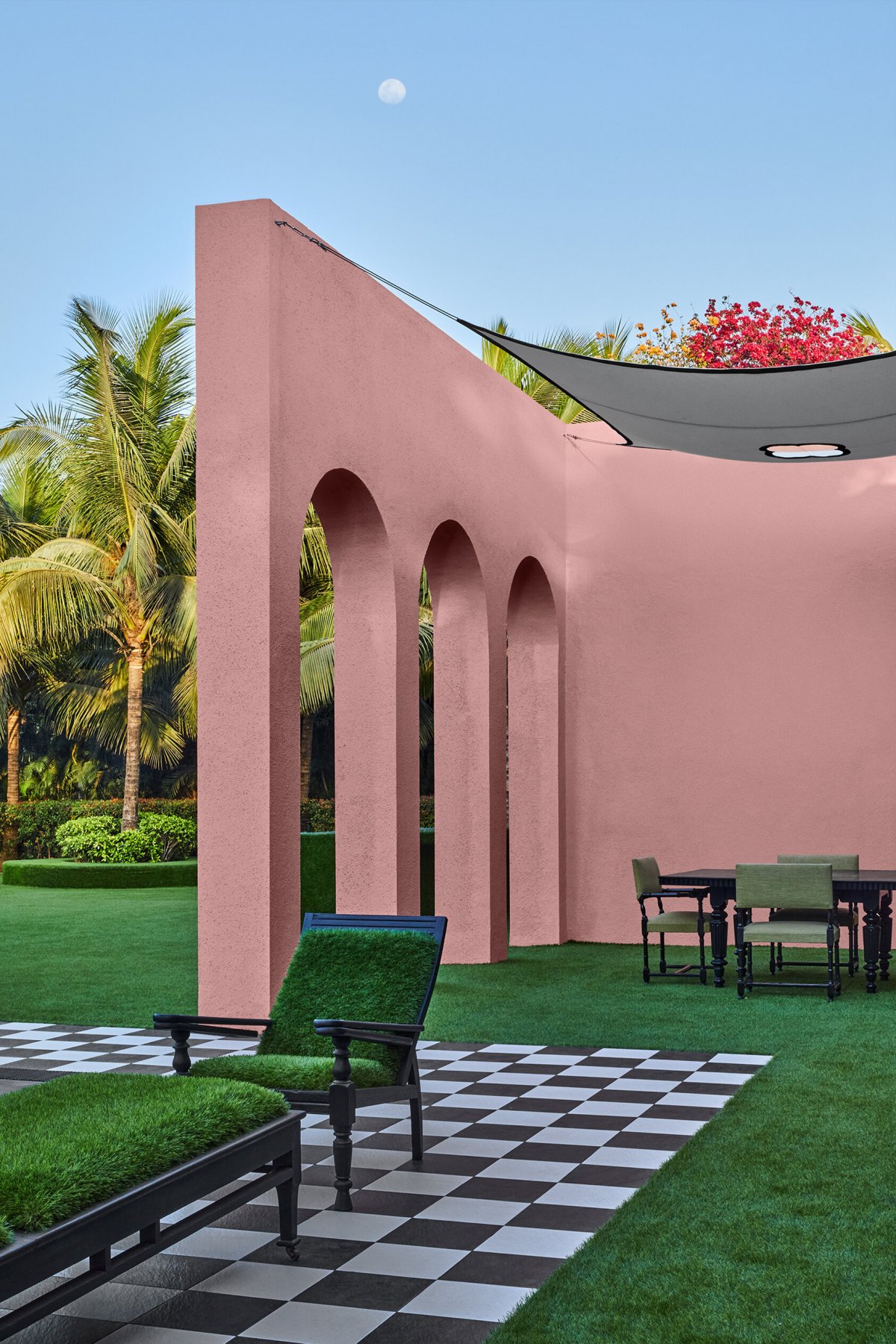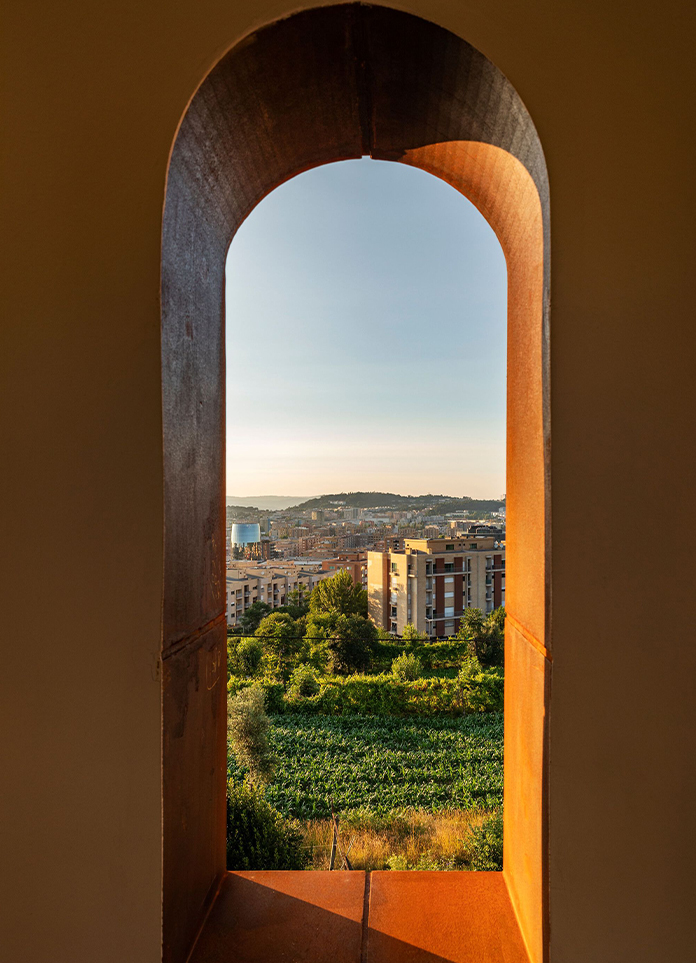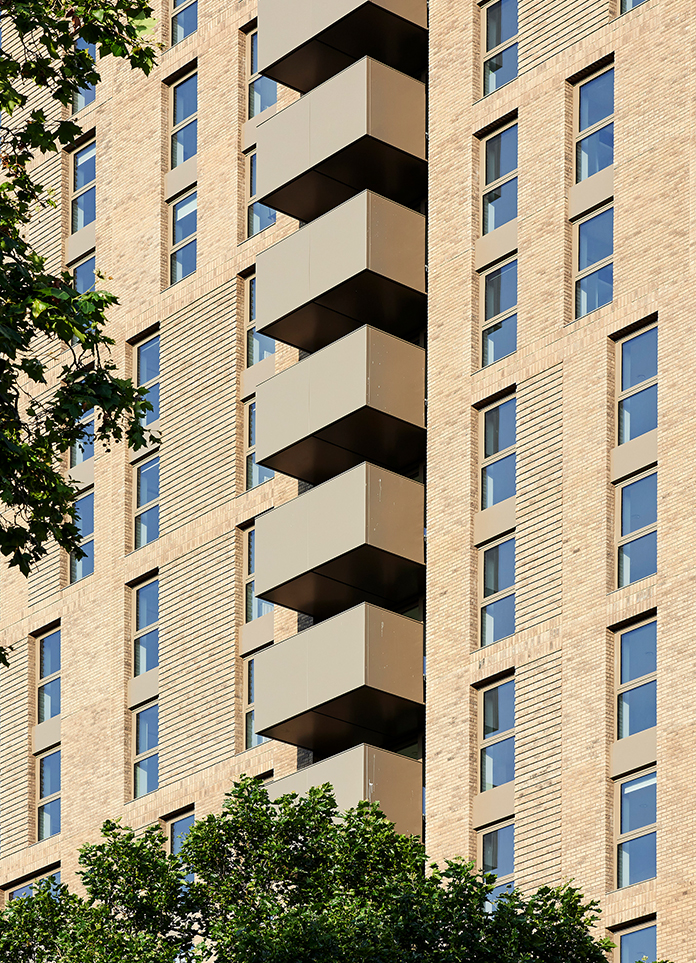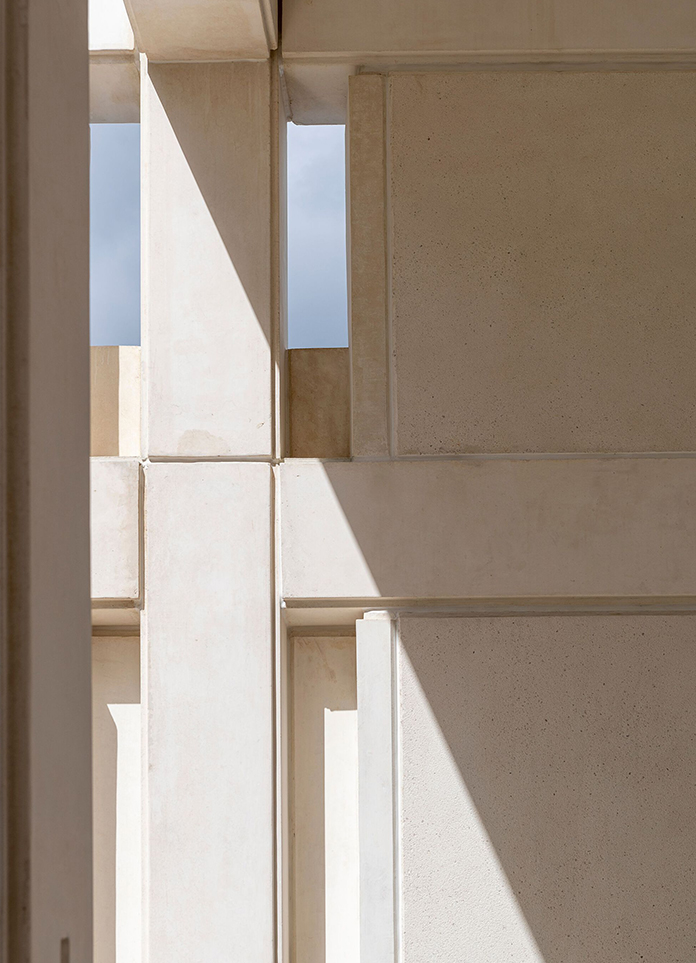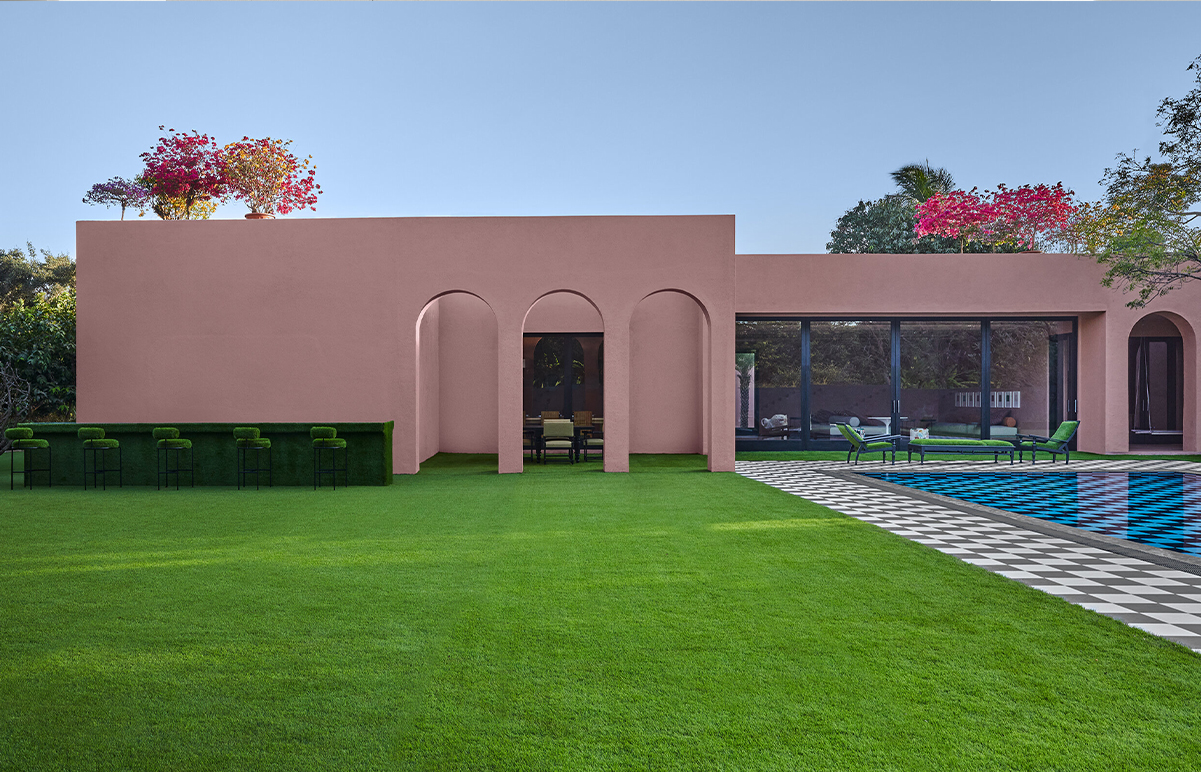
Pinakin Patel laid roots on a plot of land in Alibaug’s Chondi village and built a house of free-flowing spaces hidden behind lush landscaping. In this seamless, free-flowing space, the minimalism is not just in the fact that accessories and ornamental additions are barely there; it is apparent in the clean lines, long-limbed geometries and simple curves—of the architecture and the custom-designed furniture.
“It had to be a fantasy-inspiring space—what people would be scared to plan for themselves, but in shorter stays, appreciate that you don’t have to choose between free imagination and real life,” Pinakin Patel says. According to him, Privé is a space meant to be contemplated, not just inhabited. Here, the silences are heard, the carefully selective art and barely-there decor are perceived through a new lens—and the satisfaction of solitude is felt deeply and compellingly.
Design in India has long since formulated a sacred geometry created by the interplay of the five elements of nature—earth, water, fire, space and wind. The physical proportions came from a human scale, the ornamentation from botanicals, the drama from animals and the serenity from spirituality. Its purpose was to awaken a wondrous sense that would make you lose yourself for a moment. Several such experiences would eventually help people evolve towards the very core of design, which is life itself.
Prive Resort Villa, judiciously Agra red stone was used throughout the building, while uniform Asian paints, pigments coloured the exterior and interior facades. Custom-made furniture, fabrics and carpets are used inside, and one of the bedrooms is synonymous with essentialism, with minimalist accessories and an open wardrobe. Locally sourced monochrome tiles are placed in the courtyard in a checkerboard style, giving a youthful "look" and a vibrant atmosphere.
- Interiors: Pinakin Patel
- Photos: Ashish Sahi
- Words: Gina









